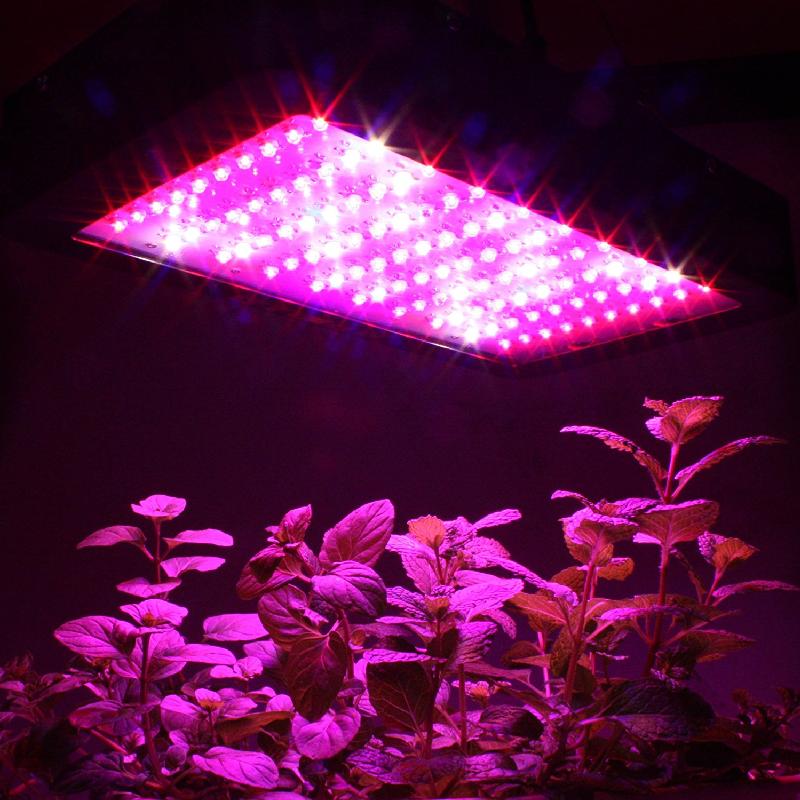LED Grow Lights. The right LED Greenhouse Lighting
Let’s verify our the position of lighting in plant grows. There may be a fancy chemical process that takes place in plants: from easy molecules, gigantic natural chains are constructed, that type the plant itself. For any process, energy is required, and in real life situations, plants use solar rays to get it. A mild photon enters the leaf and launches biochemical reactions, the results of which is weight enhance- roots, stems, leaves and fruits develop. The strategy of merging of atoms of straightforward mineral molecules into extra complex natural ones, that develops underneath the sunlight publicity is called photosynthesis. No gentle means no photosynthesis, and there isn’t any plant with out photosynthesis. No root improvement, the shoots don’t develop new leaves, no bud formation, and you can not even dream of fruits. The synthetic lighting must provide the assimilation lighting, which is needed for plant progress.
A: Photosynthetic Lively Radiation (PAR) is a measurement of the depth of light shining on a plant. PAR is measured in photons, a particle of gentle, and ranges from 400-seven-hundred nanometers which is the visible spectrum of gentle. Higher and extra full PAR will result in higher rising results. The extra research that is finished, the more worthwhile LEDs with full spectrum mild turns into to the horticulture industry. Gardening, even with just a couple small plants, is a deeply rewarding exercise the place you reap the benefits of a greener dwelling, connection to nature, and get recent fruits and veggies too. These are the very best grow lights that can assist you get there. Bestva’s 3ft x 3ft develop gentle is straightforward to make use of and produces some significantly impressive development results. Placement LED grow lights. It may be positioned very close to plants, as they don’t emit a lot heat and cannot burn leaves. Relying on the power of LED gentle, the gap could be as little as 10cm from the plant. This can be achieved with suspended plant grow lights. Ropes can help regulate the needed distance from the plant. LED grow light placement is of nice significance to plant improvement.
If we’re talking about T5 bulbs, then fluorescents make for a viable develop light type. Cheaper than LEDs, T5 fluorescent bulbs don’t give off as much heat as HIDs, however LEDs nonetheless handle heat better. You’re higher off choosing a T5 over a HID mild, though. Last but certainly not least, we’ve obtained incandescent bulbs. Not like fluorescents, these haven’t changed a lot in recent decades. The cheapest bulbs around, incandescent lights give off tons of heat, provide mild in all directions, and burn out quick. Additionally they suck up a whole lot of vitality. You’re better off using some other type of grow light over incandescents. Cannabis usually makes use of 2700K heat light such as the picture under to peak out the R9 values especially in the 700nm pink areas. LEDs have grow to be the go to selection for rising because of their excessive efficiency and spectrum control. 70-85 for many LEDs. That full spectrum high CRI (and R9) give the develop lights the stronger house in the 600-800nm pink and green area. This brings about one other enormous benefit of LEDs in horticulture lighting, the financial savings resulting from not needing expensive cooling methods and the electricity those techniques use to keep develop areas from overheating and destroying crops. LED expertise is ready to closely replicate mild coming from the solar, providing options for the indoor rising of all varieties of plants. LED know-how from progressive companies like CREE continues to advance and present LED horticulture chips are designed with full spectrum lighting protecting a large number of mild wavelengths, making them superb for growing at any stage in a plants life.

When you are shopping for LED grow lights, one in all an important issues to have a look at is the wattage. This offers you a sign of how much mild the fixture produces and the way a lot area it can cowl. Choosing an LED grow lighting system relies on the hydroponic system’s wattage necessities. Wattage is a measure that determines a light bulb’s strength, and the common LED light will draw about 32 watts to cover 1 sq. foot. Yellow and green rays don’t give a lot energy. Plants that are outdoors, in greenhouses or near home windows where they’ll get pure light indoors usually obtain enough of the pink and blue rays which might be wanted. Indoor plants that do not obtain enough of this light need additional help. Develop lights can present all of the required rays of the light spectrum to keep the plant healthy. Common incandescent bulbs don’t produce enough of the blue rays that are needed for plants and may produce a lot heat. Hopefully, quickly, we’ll be in a position to look at an LED grow light and discover its PPFD itemizing, as this is one of the best ways we have now of measuring the effectiveness of LEDs for plants. But as of this writing, LEDs are unregulated and, as you’ve already discovered, fairly onerous to figure out what claims are true and what works greatest. Proper about now, you’re in all probability mad at me because you’re no closer to knowing what LED grow light to get than if you started.
LED lights last for hundreds of hours and have better vitality effectivity in comparison with incandescent bulbs. That makes them an ideal selection for family and business use. With all the benefits of LEDs, you’ll have thought of utilizing LED grow lights in your indoor plants. Is there any distinction between these and traditional LEDs? We did a lot of research to deliver you the reply. Take into account that you simply might have to lift or decrease your lights during totally different rising areas. Elevating and lowering plants alters a light’s overall PAR per square foot. While LED grows lights don’t get almost as hot as traditional gentle fixtures, they nonetheless produce excess heat. Most lights have a mix of onboard heat sinks, radiators, and fans that help them to keep up a reasonable temperature. And not using a reliable grow system, you risk exposing your plants to excess heat and dryness. The heat that’s produced by LEDs has nowhere to go inside a grow room or tent. As such, it’s automatically absorbed by the plants and different objects in a growing space. Grow rooms should be properly ventilated. The temperature inside the room ought to fall somewhere between 70 and eighty five degrees Fahrenheit when the lights are on. Lights with built-in or remote controls offer you the liberty of programming. You might be able to set a timer, adjust the crimson, blue ratio of your mild, or alter a light’s intensity to raised fit your growing needs at any given time.












